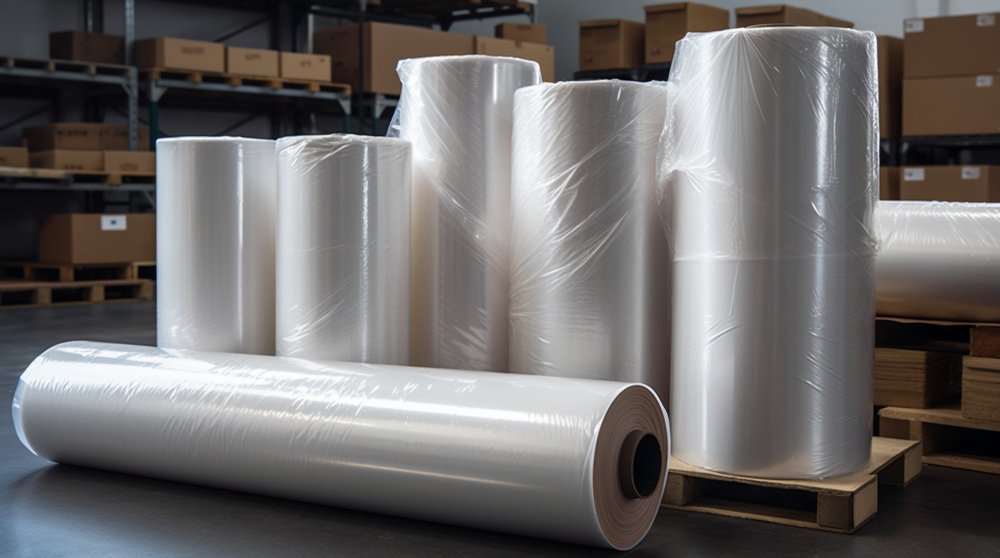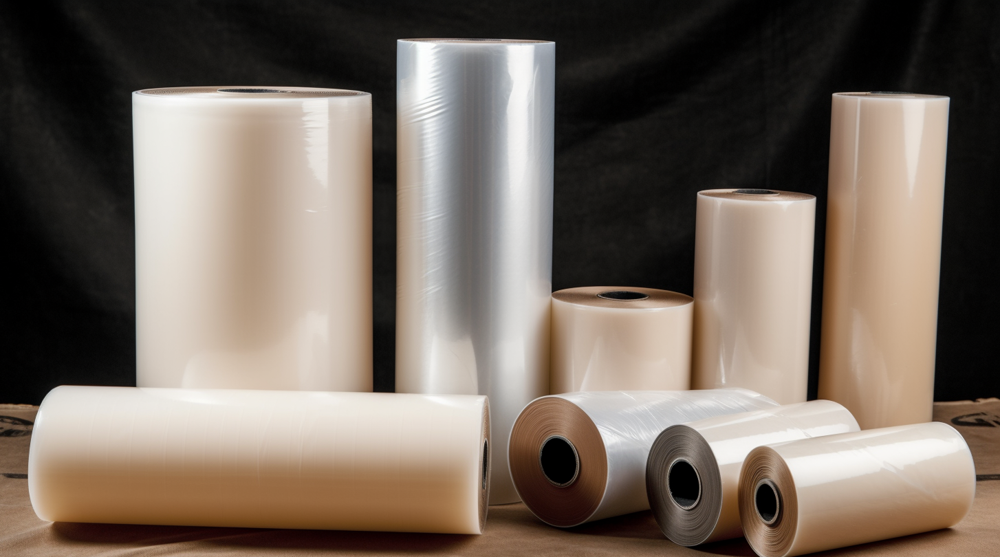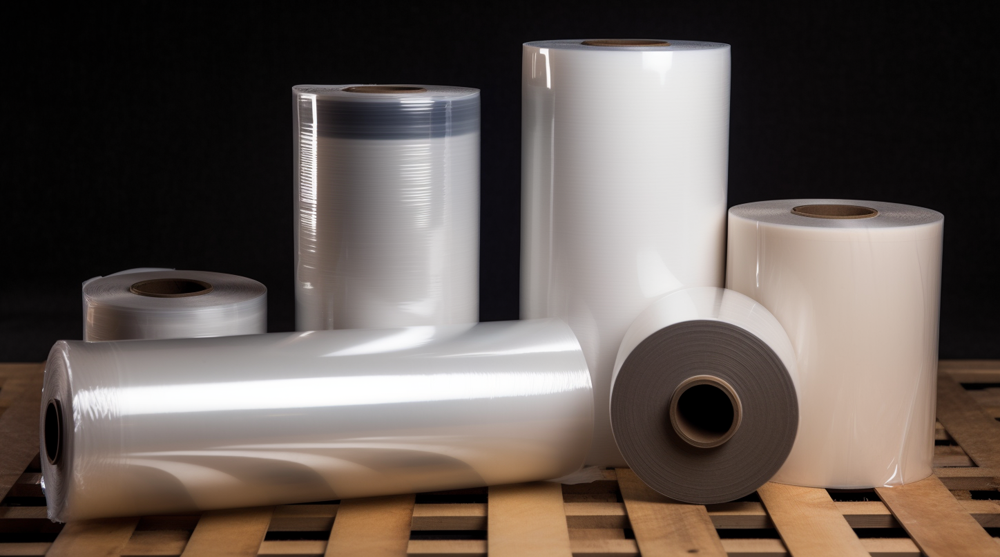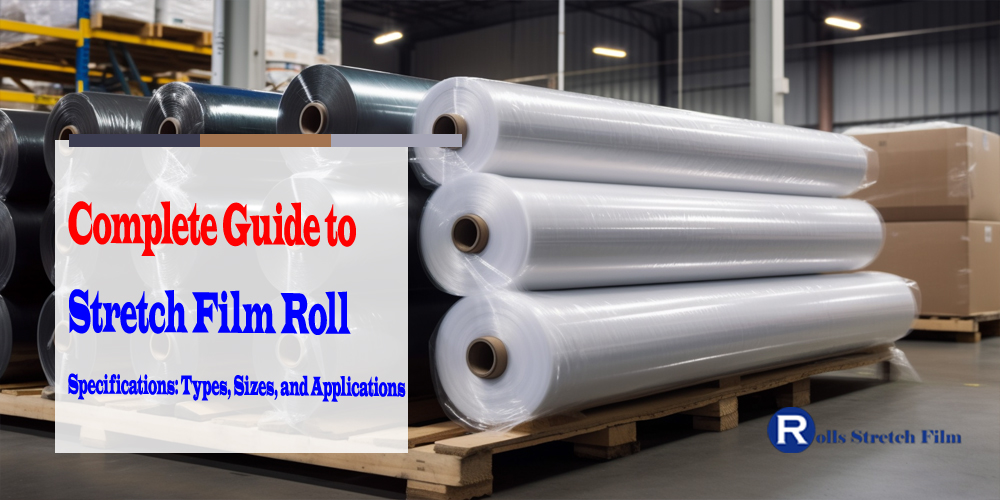Discover the secrets to selecting the perfect stretch film for your packaging needs! This comprehensive guide will teach you about stretch film roll specifications, including the best types, sizes, and applications for load containment and protection during transportation and storage. Say goodbye to the guesswork and hello to effective packaging solutions with this essential resource.
Discover different types of stretch film rolls, including cast, blown, and pre-stretched films. Learn about standard and custom sizes for width, length, and thickness. Understand key specifications such as load weight capacity, stretchability, cling, UV resistance, and color opacity. Find out how to choose the right stretch film for your packaging needs based on your requirements, environmental conditions, packaging equipment, budget considerations, and regulatory compliance.

Dive deeper into the world of stretch film rolls and discover practical tips and insights for selecting the perfect stretch film for your packaging needs.
Introduction to Stretch Film Roll Specifications
Stretch film, also known as stretch wrap, is a highly elastic plastic film commonly used to wrap around palletized goods to secure them during transport and storage. Stretch film is typically made from linear low-density polyethylene (LLDPE) resin, which provides excellent stretchability and puncture resistance.
The stretch film plays a vital role in the packaging industry as it offers numerous benefits such as load stability, protection from dust, moisture, UV rays, tamper evidence, and ease of handling. It helps reduce the risk of damage to goods during transit, minimizing product loss, and increasing overall operational efficiency.
Understanding the specifications of stretch film rolls is crucial to ensure that the right type, size, and specifications are chosen for a particular application. This includes factors such as the type of stretch film, roll size, load weight capacity, stretchability, cling, UV resistance, color, opacity, and core size, which all play a significant role in determining the performance and suitability of the stretch film for a specific packaging requirement.
| Property | Unit | Test Method | Typical Value |
|---|---|---|---|
| Thickness | µm | ASTM D374 | 9-51 |
| Tensile Strength at Break | MPa | ASTM D882 | 25-35 |
| Elongation at Break | % | ASTM D882 | 300-600 |
| Tear Resistance | g | ASTM D1922 | 150-300 |
| Puncture Resistance | N | ASTM D5748 | 20-32 |
| Haze | % | ASTM D1003 | 1.5-3.0 |
| Gloss | % | ASTM D2457 | 80-120 |
Types of Stretch Film Rolls
Cast Stretch Film
1. Description and Features
Cast stretch film is the most common stretch film and is manufactured using cast extrusion. It is a clear, glossy film known for its excellent clarity, quiet unwinding, and high tear resistance. Cast stretch film has a one-sided cling property, meaning it clings to itself but not to the wrapped products.
2. Advantages and Disadvantages
The advantages of the cast stretch film include its high clarity, smooth unwinding, and ability to provide excellent optics for barcode scanning. It is also cost-effective and suitable for various applications, including food packaging, as it meets FDA requirements for direct contact with food. However, cast stretch film has lower puncture resistance than other types of stretch film and may not be suitable for heavy or irregularly shaped loads.
3. Common Applications
Cast stretch film is commonly used in many applications, including palletizing goods for transportation, bundling smaller items, securing loads with irregular shapes, and protecting goods from dust and moisture during storage.
Blown Stretch Film
1. Description and Features
Blown stretch film is manufactured using the blown extrusion process, resulting in a thicker, hazy film with higher puncture resistance than cast stretch film. It has a two-sided cling property, which means it clings to both itself and the wrapped products, providing better load stability.
2. Advantages and Disadvantages
Blown stretch film is known for its superior puncture resistance, making it suitable for heavy and irregularly shaped loads. It also has a higher load weight capacity compared to cast stretch film. However, blown stretch film has lower clarity than cast stretch film, which may affect barcode scanning and tends to make more noise during unwinding.
3. Common Applications
Blown stretch film is commonly used in applications where high puncture resistance is of utmost importance, such as packaging sharp or heavy objects, securing loads with irregular shapes, and providing added protection for goods during transportation and storage in challenging environments.
Pre-Stretched Stretch Film
1. Description and Features
Pre-stretched stretch film, also known as prestretch film, is a type of stretch film that is stretched during manufacturing, resulting in a thinner film with higher tensile strength and load containment compared to traditional stretch film. It is commonly available in rolls with a higher pre-stretch ratio, typically 70% to 90%.
2. Advantages and Disadvantages
The pre-stretched stretch film offers several advantages, including reduced film usage, increased load containment, and improved load stability. It also requires less effort during application due to its higher pre-stretch ratio, which can result in reduced operator fatigue. However, the pre-stretched stretch film may have lower puncture resistance than other types of stretch film and may not be suitable for heavy or sharp-edged loads.
3. Common Applications
Pre-stretched stretch film is commonly used in applications where optimizing film usage and load containment are essential, such as in high-volume operations, where reducing film consumption and increasing productivity are key considerations.
Stretch Film Roll Sizes

Width of Stretch Film Rolls
1. Standard Widths
Stretch film rolls are available in various standard widths, typically 12 to 30 inches, with the most common widths being 18 and 20 inches. These standard widths are designed to accommodate different load sizes and types, providing flexibility in selecting the appropriate width for specific packaging requirements.
2. Custom Widths
In addition to standard widths, stretch film rolls can be custom-made to suit specific needs. Custom widths may be required for unique load sizes or applications requiring specialized film coverage. Working with a reputable stretch film supplier who can provide custom widths is important to ensure the best fit for your packaging needs.
Length of Stretch Film Rolls
1. Standard Lengths
Stretch film rolls come in various standard lengths, typically ranging from 1500 to 5000 feet, with the most common lengths being 2000 and 3000 feet. These standard lengths cater to different packaging requirements, providing options for load volumes and usage levels.
2. Custom Lengths
Some manufacturers can also obtain custom lengths of stretch film rolls to suit specific needs. Custom lengths may be required for unique load sizes, packaging equipment, or specific applications where precise film usage is crucial. Working with a reputable stretch film supplier who can provide custom lengths can help ensure optimal film usage and cost efficiency.
| Size | Width (mm) | Length (m) | Weight (kg) |
|---|---|---|---|
| Hand Roll | 250-500 | 100-5000 | 0.5-5.0 |
| Machine Roll | 250-1500 | 1000-5000 | 10-20 |
| Jumbo Roll | 250-1500 | 5000-10000 | 20-50 |
The thickness of Stretch Film Rolls
1. Gauge Measurement
The thickness of stretch film rolls is typically measured in gauge, which refers to the thickness of the film in thousandths of an inch. Common gauges for stretch film rolls range from 60 to 120 gauge, with higher gauge films being thicker and providing increased puncture resistance and load containment.
2. Micron Measurement
Stretch film rolls may also be measured in microns, a metric thickness measurement. Common micron measurements for stretch film rolls range from 15 to 30 microns, with higher microns indicating thicker films. It’s important to note that gauge and micron measurements are not interchangeable and may require conversion when comparing films with different measurement units.
Understanding Stretch Film Roll Specifications
Load Weight Capacity
The load weight capacity of the stretch film refers to the maximum weight that the film can safely hold without tearing or failing. It is a critical specification to consider when selecting a stretch film. Using a film with insufficient load weight capacity can result in load instability and damage to the packaged goods. Various factors, including the type and thickness of the film, the stretchability and elongation properties, and the application method, influence the load weight capacity of stretch film. It is important to choose a stretch film with a load weight capacity that meets or exceeds the weight of your specific load to ensure proper load containment and protection during transportation and storage.
Stretchability and Elongation
Stretchability and elongation are important specifications determining how much a stretch film can be stretched without tearing. Stretchability refers to the ability of the film to stretch without losing its original shape. In contrast, elongation refers to the percentage of increase in length that the film can undergo when stretched. These properties are crucial for proper load containment and stability during transportation and storage. Films with higher stretchability and elongation properties are generally more effective in securing irregularly shaped loads or loads with sharp edges.
Cling and Tackiness
Cling and tackiness determine the film’s ability to adhere to itself and the load. A stretch film with good cling and tackiness will tightly wrap around the load, forming a secure bond that helps prevent shifting or loosening of the film during transportation and storage. This is particularly important for loads with irregular shapes or sharp edges that may require additional film adherence to maintain stability.
UV Resistance
UV resistance is a specification that indicates the ability of the stretch film to withstand exposure to ultraviolet (UV) rays from the sun without degrading or losing its properties. This is particularly important for outdoor storage or transportation, where prolonged exposure to sunlight can cause the film to deteriorate and lose its effectiveness in protecting the load. UV-resistant stretch film is designed to maintain its performance and integrity even under prolonged exposure to sunlight.
Color and Opacity
Stretch films are available in various colors and opacities, serving different purposes. Colored stretch films can be used for identification or branding purposes, while opaque films can provide added security by concealing the contents of the load from view. The color and opacity of the stretch film may also affect its performance properties, such as UV resistance, and should be considered based on the specific packaging requirements.
Core Size and Type
The core size and type of the stretch film roll are also important specifications to consider. The core is the inner tube around which the film is wound, and it can come in different sizes and types. Common core sizes for stretch film rolls are 3 and 1.5 inches, with 3 inches being the most common. The core type, whether a standard core or an extended core (also known as a built-in handle or dispenser), can affect the ease of use and application of the stretch film.

By understanding the complete guide to stretch film roll specifications, you can ensure efficient and effective packaging solutions for your transportation and storage needs. Choose the right stretch film based on your unique requirements and packaging conditions to achieve optimal load performance and protection.














